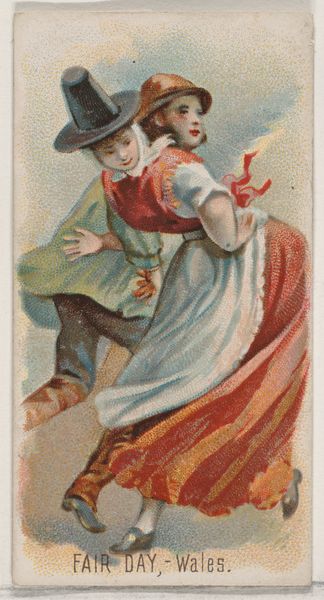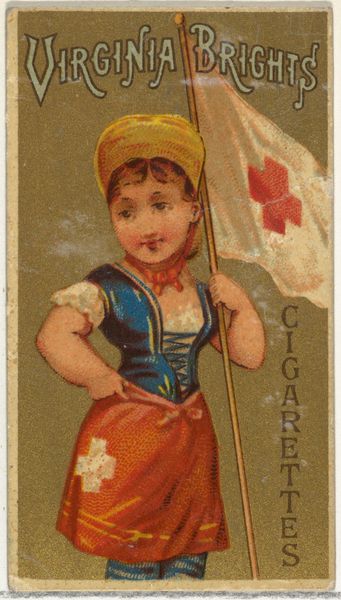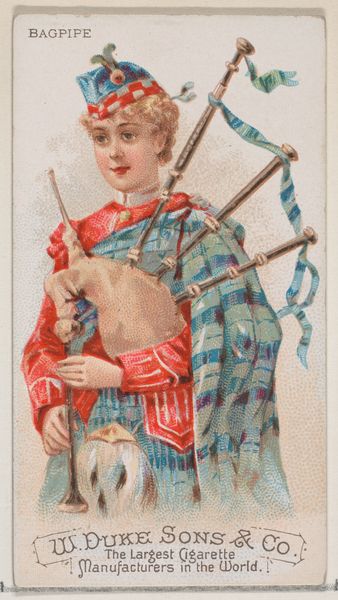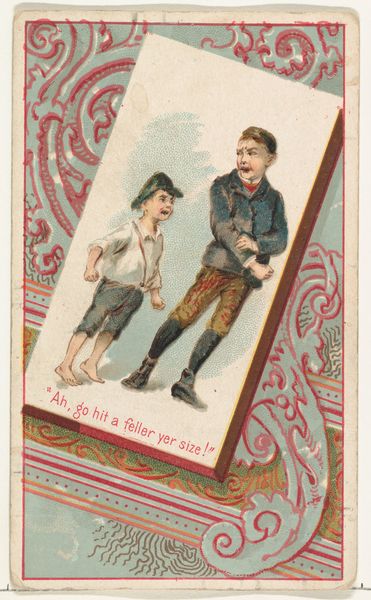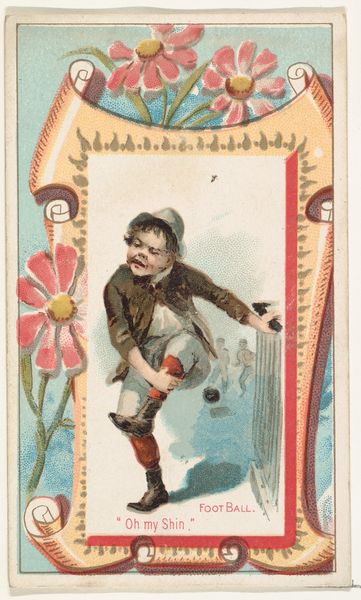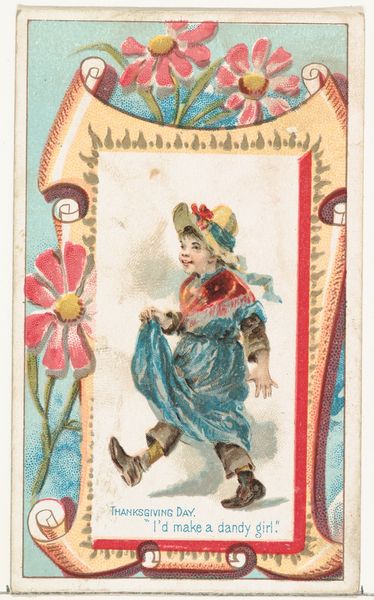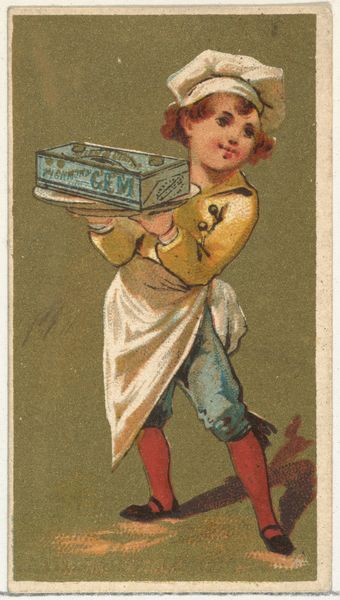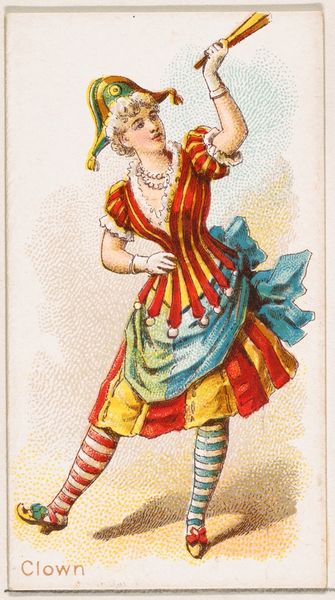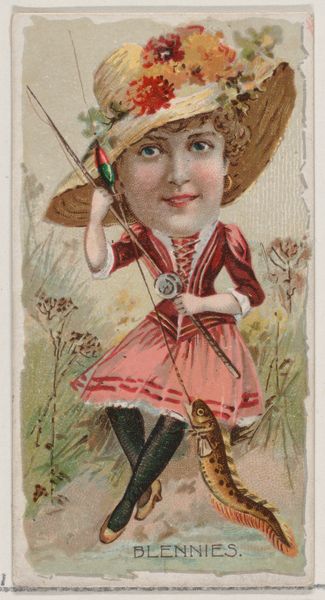
Shrove-Tide, Denmark, from the Holidays series (N80) for Duke brand cigarettes 1890
0:00
0:00
drawing, coloured-pencil, print
#
portrait
#
drawing
#
coloured-pencil
# print
#
impressionism
#
coloured pencil
#
watercolour illustration
#
genre-painting
#
portrait art
#
watercolor
Dimensions: Sheet: 2 3/4 x 1 1/2 in. (7 x 3.8 cm)
Copyright: Public Domain
Editor: This is "Shrove-Tide, Denmark," a colored-pencil print from around 1890, part of the Holidays series by W. Duke, Sons & Co. The texture feels almost like watercolor. It's a quirky, intriguing image; the central figure’s direct gaze and somewhat distressed expression are very arresting. What stands out to you from a formalist perspective? Curator: Observe how the artist employs a restricted color palette. The muted blues and reds create visual harmony and unity. Notice how the gaze is upward; the object is directly above the center which places the audience perspective at ground-level. How does this asymmetry alter your sense of spatial relationships within the image? Editor: It definitely makes me look up, feel small. The figures around the main subject almost become a backdrop, even though they’re actively engaged, aren't they? How does the materiality influence our reading of the artwork's overall effect? Curator: The choice of colored pencil as a medium is crucial. It produces a unique softness, with less contrast. The artist's handling of the material contributes significantly to the artwork’s distinctive charm. Its lightness, in contrast to oil paint, generates a sense of playful spontaneity. Editor: So it is more about what is in the piece, than where it came from? It gives a unique point of view. Curator: Precisely. We derive meaning from form, not necessarily from extraneous historical factors. The elements are working together to achieve something unique that evokes feelings that might have otherwise been overlooked. Editor: I see. The visual language becomes the story itself. Thanks! Curator: My pleasure! Understanding the form enables understanding the intention of the message that transcends time and place.
Comments
No comments
Be the first to comment and join the conversation on the ultimate creative platform.
